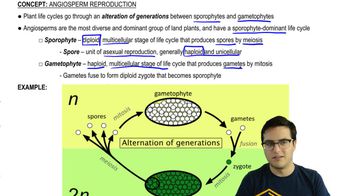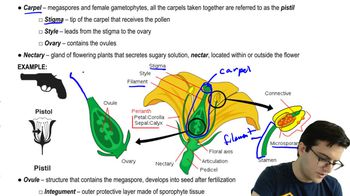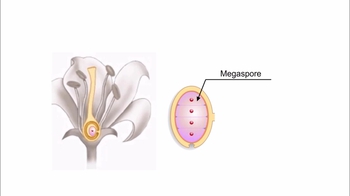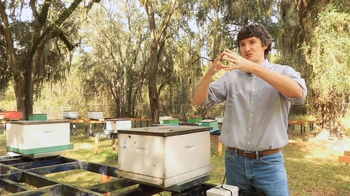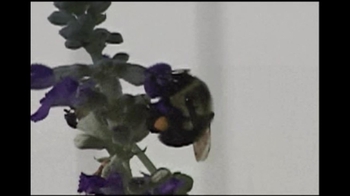Table of contents
- 1. Introduction to Biology2h 42m
- 2. Chemistry3h 40m
- 3. Water1h 26m
- 4. Biomolecules2h 23m
- 5. Cell Components2h 26m
- 6. The Membrane2h 31m
- 7. Energy and Metabolism2h 0m
- 8. Respiration2h 40m
- 9. Photosynthesis2h 49m
- 10. Cell Signaling59m
- 11. Cell Division2h 47m
- 12. Meiosis2h 0m
- 13. Mendelian Genetics4h 44m
- Introduction to Mendel's Experiments7m
- Genotype vs. Phenotype17m
- Punnett Squares13m
- Mendel's Experiments26m
- Mendel's Laws18m
- Monohybrid Crosses19m
- Test Crosses14m
- Dihybrid Crosses20m
- Punnett Square Probability26m
- Incomplete Dominance vs. Codominance20m
- Epistasis7m
- Non-Mendelian Genetics12m
- Pedigrees6m
- Autosomal Inheritance21m
- Sex-Linked Inheritance43m
- X-Inactivation9m
- 14. DNA Synthesis2h 27m
- 15. Gene Expression3h 20m
- 16. Regulation of Expression3h 31m
- Introduction to Regulation of Gene Expression13m
- Prokaryotic Gene Regulation via Operons27m
- The Lac Operon21m
- Glucose's Impact on Lac Operon25m
- The Trp Operon20m
- Review of the Lac Operon & Trp Operon11m
- Introduction to Eukaryotic Gene Regulation9m
- Eukaryotic Chromatin Modifications16m
- Eukaryotic Transcriptional Control22m
- Eukaryotic Post-Transcriptional Regulation28m
- Eukaryotic Post-Translational Regulation13m
- 17. Viruses37m
- 18. Biotechnology2h 58m
- 19. Genomics17m
- 20. Development1h 5m
- 21. Evolution3h 1m
- 22. Evolution of Populations3h 52m
- 23. Speciation1h 37m
- 24. History of Life on Earth2h 6m
- 25. Phylogeny2h 31m
- 26. Prokaryotes4h 59m
- 27. Protists1h 12m
- 28. Plants1h 22m
- 29. Fungi36m
- 30. Overview of Animals34m
- 31. Invertebrates1h 2m
- 32. Vertebrates50m
- 33. Plant Anatomy1h 3m
- 34. Vascular Plant Transport1h 2m
- 35. Soil37m
- 36. Plant Reproduction47m
- 37. Plant Sensation and Response1h 9m
- 38. Animal Form and Function1h 19m
- 39. Digestive System1h 10m
- 40. Circulatory System1h 57m
- 41. Immune System1h 12m
- 42. Osmoregulation and Excretion50m
- 43. Endocrine System1h 4m
- 44. Animal Reproduction1h 2m
- 45. Nervous System1h 55m
- 46. Sensory Systems46m
- 47. Muscle Systems23m
- 48. Ecology3h 11m
- Introduction to Ecology20m
- Biogeography14m
- Earth's Climate Patterns50m
- Introduction to Terrestrial Biomes10m
- Terrestrial Biomes: Near Equator13m
- Terrestrial Biomes: Temperate Regions10m
- Terrestrial Biomes: Northern Regions15m
- Introduction to Aquatic Biomes27m
- Freshwater Aquatic Biomes14m
- Marine Aquatic Biomes13m
- 49. Animal Behavior28m
- 50. Population Ecology3h 41m
- Introduction to Population Ecology28m
- Population Sampling Methods23m
- Life History12m
- Population Demography17m
- Factors Limiting Population Growth14m
- Introduction to Population Growth Models22m
- Linear Population Growth6m
- Exponential Population Growth29m
- Logistic Population Growth32m
- r/K Selection10m
- The Human Population22m
- 51. Community Ecology2h 46m
- Introduction to Community Ecology2m
- Introduction to Community Interactions9m
- Community Interactions: Competition (-/-)38m
- Community Interactions: Exploitation (+/-)23m
- Community Interactions: Mutualism (+/+) & Commensalism (+/0)9m
- Community Structure35m
- Community Dynamics26m
- Geographic Impact on Communities21m
- 52. Ecosystems2h 36m
- 53. Conservation Biology24m
36. Plant Reproduction
Flowers
Problem 6`
Textbook Question
A small flower with green petals is most likely:
a. Bee-pollinated
b. Bird-pollinated
c. Bat-pollinated
d. Wind-pollinated
 Verified step by step guidance
Verified step by step guidance1
Identify the characteristics of the flower: small size and green petals.
Consider the typical traits of flowers pollinated by different agents: bee-pollinated flowers are often brightly colored and fragrant, bird-pollinated flowers are usually tubular and brightly colored, bat-pollinated flowers are often large and open at night, and wind-pollinated flowers are typically small and not brightly colored.
Analyze the flower's characteristics in relation to these traits: the small size and green color suggest it is not adapted to attract animals like bees, birds, or bats.
Understand that wind-pollinated flowers do not rely on attracting pollinators and often have inconspicuous colors like green.
Conclude that the small flower with green petals is most likely adapted for wind pollination, as it does not exhibit traits that attract animal pollinators.
 Verified video answer for a similar problem:
Verified video answer for a similar problem:This video solution was recommended by our tutors as helpful for the problem above
Video duration:
1mPlay a video:
Was this helpful?
Key Concepts
Here are the essential concepts you must grasp in order to answer the question correctly.
Pollination Mechanisms
Pollination mechanisms refer to the various ways in which pollen is transferred from the male part of a flower to the female part. This can occur through biotic agents like insects, birds, and bats, or abiotic agents like wind and water. Understanding these mechanisms helps in identifying the likely pollinator based on flower characteristics.
Recommended video:
Guided course
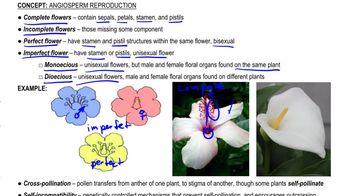
Pollination
Flower Characteristics and Pollinators
Different pollinators are attracted to specific flower traits. For instance, brightly colored and fragrant flowers often attract bees, while flowers with dull colors and no scent, like those with green petals, are typically wind-pollinated. Recognizing these traits is crucial for determining the pollination method.
Recommended video:
Guided course

Pollination
Wind Pollination
Wind pollination, or anemophily, involves the transfer of pollen through the air. Flowers adapted to wind pollination usually have small, inconspicuous petals and produce large amounts of lightweight pollen. These adaptations increase the likelihood of successful pollination without the need for animal pollinators.
Recommended video:
Guided course

Pollination

 5:18m
5:18mWatch next
Master Alteration of Generations with a bite sized video explanation from Jason
Start learningRelated Videos
Related Practice

